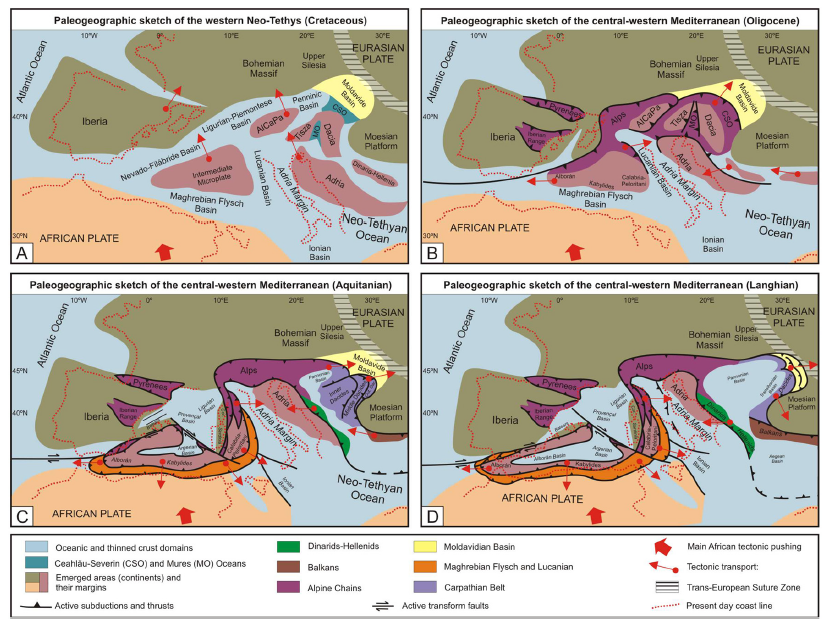A comparison of the stratigraphic record between two different branches of the Tethys is attempted for the first time. This study concerns the main Oligocene-Miocene tectono-sedimentary events in the Cenozoic units of the Moldavidian Basin (Romanian Eastern Carpathians) and the Maghrebian Flysch Basin (Maghrebian Chain and its lateral extension in the Betic and Southern Apennine Chains). Both basins are characterized by three main general Oligo-Miocene successions (internal, mixed, and external) corresponding to three subdomains controlled by the geological evolution of opposite plate (or microplate) margins and affected by a similar tectonic evolution. The successions of the three subdomains of the two basins show very similar features regarding stratigraphic records (lithofacies and petrofacies associations, unconformities, marker-levels, age), and the space-time sediment supply diversification (i.e., immature and super-mature arenites coming from opposite margins). Furthermore, pre-, syn- and post-orogenic successions have been identified in the geological reconstructions of both basins. The tectonic control on depositional processes (i.e., a large amount of siliciclastic supply confined in restricted time ranges, widespread volcaniclastites linked to acid-intermediate penecontemporaneous volcanic activity), and the appearance of indicators of syn-sedimentary tectonic activity (turbidites, slumps, and olistostromes) result in correlable events related to deformation phases that in turn are indicative of a similar evolution. Also, the basinal evolutionary stages (i.e., beginning of terrigenous supply, thrust-top basin formation and gravitational sliding, molassic and/or intramontane sedimentary cycles), the timing of deformation phases (drifting, foredeep), and geotectonic events (from extension to compression and post-orogenic deformation) seem to be similar. All results are encompassed in an evolutionary geodynamic model considered in the context of the Africa-Europe convergence where intermediate microplates are involved. This complex framework implies a progressive reorientation of convergence direction of these microplates that occurs during similar geodynamic events leading to the closure of the western Tethys Ocean and its related late-Alpine branches. This comparative approach, if applied to similar evolutionary phases of other mountain chains, can be useful for different geological contexts of other orogenic belts, especially to check the major general geological constraints for their evolution.

Recent Comments